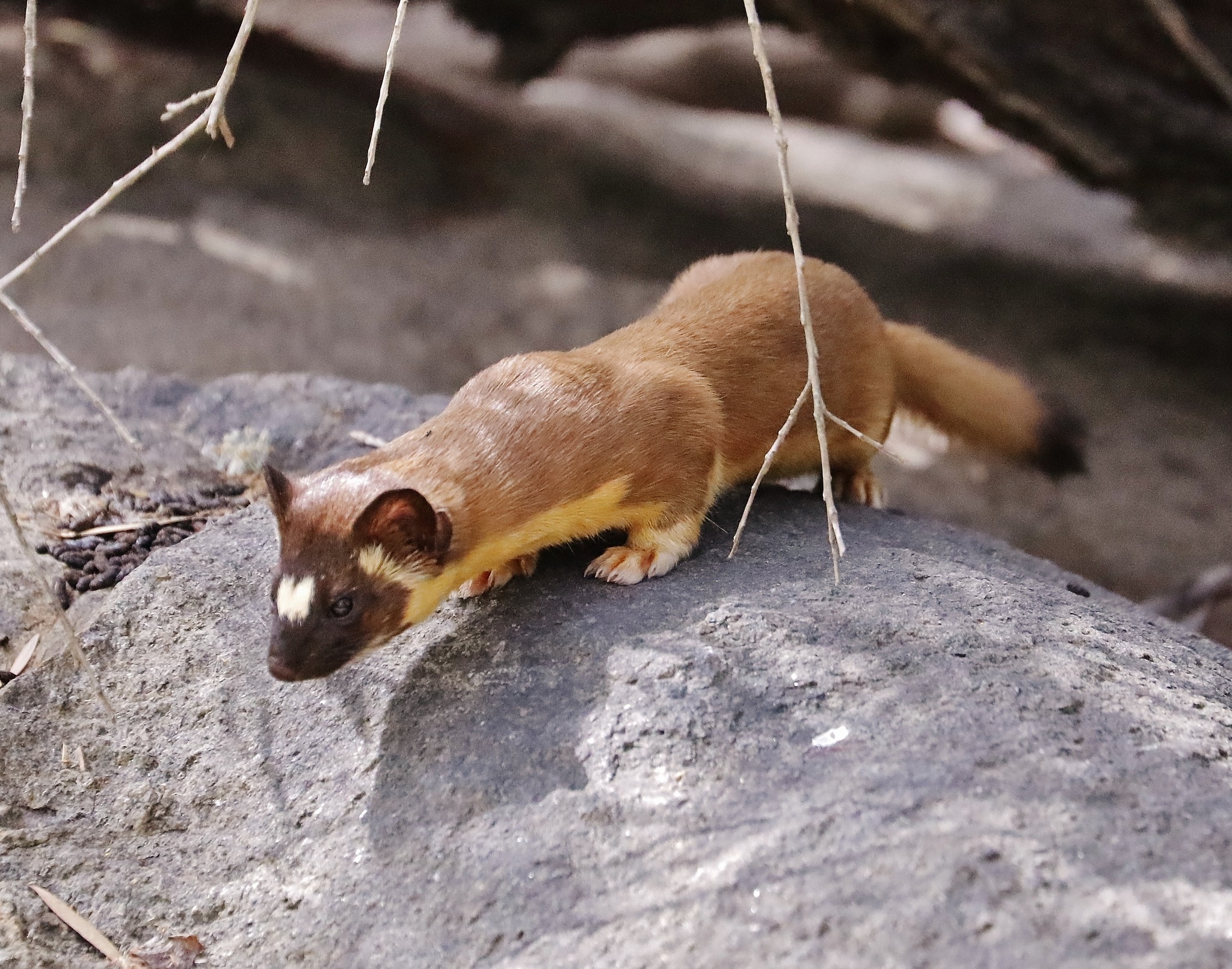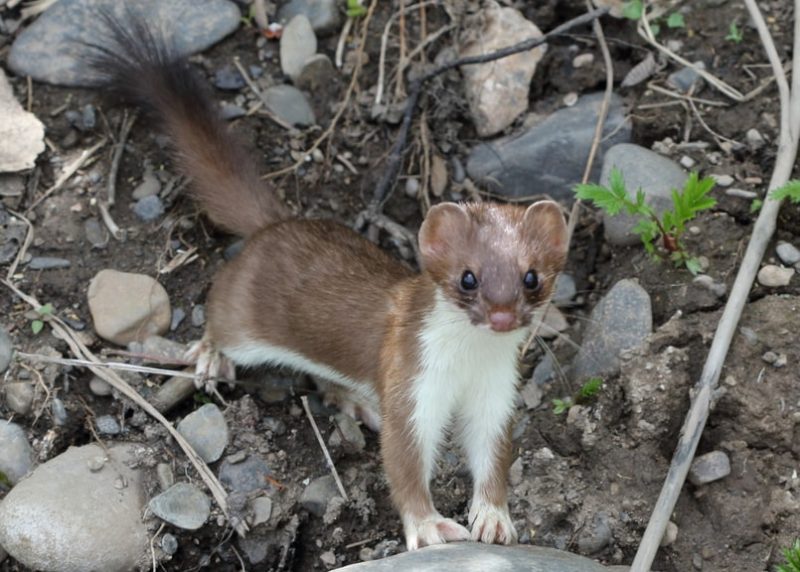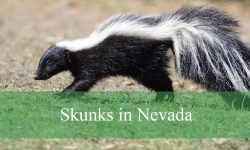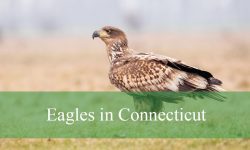Utah is home to two fascinating native weasel species: the Long-tailed Weasel and the Short-tailed Weasel. These small carnivores are skilled hunters and play an important role in controlling rodent populations. Understanding their habits and appearances can make spotting them in the wild a rewarding experience.
Both species exhibit remarkable agility and adaptability, inhabiting a variety of ecosystems from forests and grasslands to shrublands and streams. Their distinctive fur patterns and tail shapes help wildlife enthusiasts and researchers identify them with ease. Seasonal changes, especially in winter, can alter their appearance, making identification even more interesting.
Observing weasels in Utah requires patience, timing, and knowledge of their preferred habitats. This guide will provide detailed information on physical characteristics, behavior, diet, and the best places and times to see them, along with clear pictures to aid identification.
Different Types of Weasels Found in Utah
Long-tailed Weasel (Neogale frenata)

The Long-tailed Weasel is a slender, agile predator commonly found throughout Utah. Its body is elongated with short legs, enabling it to move quickly through dense vegetation and burrows. The fur is typically brown on the upper body and creamy white underneath during the warmer months. In northern or higher-altitude regions, the winter coat may turn completely white, except for the black-tipped tail, which is a distinctive feature of this species.
Identification of the Long-tailed Weasel is relatively straightforward due to its long, narrow body, black-tipped tail, and sharp facial features. Adults have large, dark eyes and small rounded ears, giving them excellent vision and hearing for hunting. The contrasting fur coloration between the dorsal and ventral sides helps distinguish it from other small carnivores in the area, such as minks or ferrets.
Adults typically measure between 13 to 18 inches in body length, with the tail adding an additional 6 to 10 inches. They weigh between 3 to 8 ounces. This size allows them to be effective predators while remaining small enough to navigate tight spaces. Their long tails aid in balance during high-speed chases and agile movements.
Behaviorally, Long-tailed Weasels are solitary and territorial. They are active year-round, mostly during dawn and dusk. Their diet primarily consists of small mammals like mice, voles, and rabbits, but they also eat birds, eggs, and insects. Long-tailed Weasels are found in diverse habitats, including forests, grasslands, shrublands, and agricultural areas, often denning in abandoned burrows or hollow logs.
Short-tailed Weasel (Mustela erminea)

The Short-tailed Weasel, or ermine, is smaller and stockier than the long-tailed weasel but is equally adept at hunting. It has a brown or reddish-brown coat on the upper body during summer, with a white underside. In winter, its fur often turns entirely white, except for the black tip on its tail, providing excellent camouflage in snowy environments.
This species can be identified by its shorter tail compared to the Long-tailed Weasel and its seasonal color change. Its small, rounded ears, sharp nose, and bright eyes allow it to detect prey efficiently. Unlike the long-tailed weasel, the Short-tailed Weasel tends to have a more compact appearance, which is especially noticeable in juveniles.
Adult Short-tailed Weasels measure about 7 to 13 inches in body length, with the tail adding 1.5 to 3 inches. They usually weigh 2 to 5 ounces. Their smaller size helps them access narrow burrows and tunnels where prey often hides. Despite their small stature, they are fierce predators with a high metabolism and constant need for food.
Short-tailed Weasels are primarily nocturnal but can be active during the day in areas with little human disturbance. They feed on small rodents, rabbits, birds, and insects. In Utah, they are commonly found in wooded areas, near streams, or in shrublands, often taking shelter in abandoned burrows, rock crevices, or dense vegetation to avoid predators and harsh weather conditions.
Comparison of Native Weasel Species in Utah
Feature |
Long-tailed Weasel (Neogale frenata) |
Short-tailed Weasel (Mustela erminea) |
|---|---|---|
Body Length |
13–18 in (33–46 cm) |
7–13 in (18–33 cm) |
Tail Length |
6–10 in (15–25 cm), black-tipped |
1.5–3 in (4–8 cm), black-tipped |
Weight |
3–8 oz (85–225 g) |
2–5 oz (55–140 g) |
Fur Color (Summer) |
Brown upper, creamy underside |
Brown/reddish upper, white underside |
Fur Color (Winter) |
White in northern/higher regions, black-tipped tail |
White, black-tipped tail |
Habitat |
Forests, grasslands, shrublands, farmlands |
Wooded areas, shrublands, near streams |
Behavior |
Solitary, active dawn/dusk, year-round |
Primarily nocturnal, sometimes diurnal in undisturbed areas |
Diet |
Small mammals, birds, eggs, insects |
Small rodents, rabbits, birds, insects |
Distinctive Feature |
Long, black-tipped tail |
Shorter tail, seasonal color change |
Best Time and Places to Observe Weasels in Utah
Weasels are elusive and mostly solitary animals, so observing them requires patience and knowledge of their habits. The long-tailed weasel is generally active year-round, with peak activity during dawn and dusk, making early mornings and late afternoons the best times to spot them. They can be seen hunting near fields, forests, and along the edges of farmlands, often near abandoned burrows or dense vegetation.
The short-tailed weasel is primarily nocturnal, although it may be seen during daylight in areas with minimal human activity. The winter months provide an opportunity to spot them more easily because their white winter coats contrast sharply against the landscape, especially in snowy regions. Ideal habitats include wooded areas, shrublands, near streams, and rocky outcrops where they can safely hunt and den.
Observers are advised to move quietly and keep a safe distance to avoid disturbing the weasels. Using binoculars or trail cameras can significantly increase the chance of sightings without interfering with their natural behavior.
FAQs About Weasels in Utah
What is the difference between long-tailed and short-tailed weasels?
The main differences are size, tail length, and fur coloration. Long-tailed weasels are larger with a long, black-tipped tail, while short-tailed weasels are smaller with a shorter tail. Both species change fur color in winter, but the long-tailed weasel may retain brown in milder regions.
Are weasels dangerous to humans or pets?
Weasels are generally not dangerous to humans, as they avoid contact. However, they are fierce hunters and may attack small pets or poultry if threatened or hungry. Proper fencing and secure coops help prevent such incidents.
When is the best time to see weasels in the wild?
For long-tailed weasels, dawn and dusk year-round are ideal. Short-tailed weasels are mostly nocturnal, but winter daylight hours in remote areas can offer good visibility due to their white coats.
Where in Utah are weasels most commonly found?
Long-tailed weasels inhabit forests, grasslands, shrublands, and farmland edges across Utah. Short-tailed weasels prefer wooded areas, shrublands, and regions near streams or rocky terrain, especially at higher elevations.
What do weasels eat?
Both species are carnivorous and primarily hunt small mammals like mice, voles, and rabbits. They also consume birds, eggs, and insects, adapting their diet based on prey availability.






